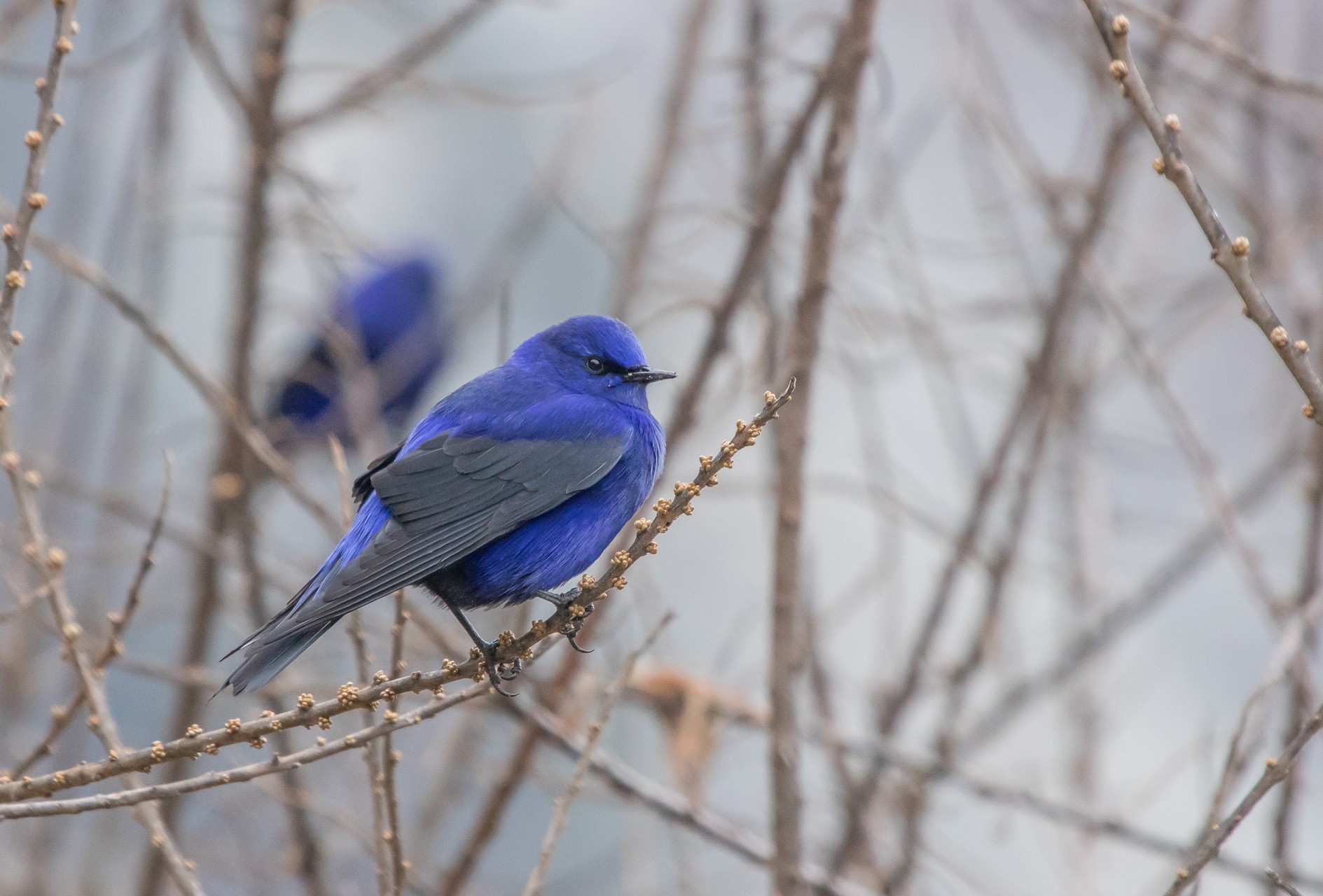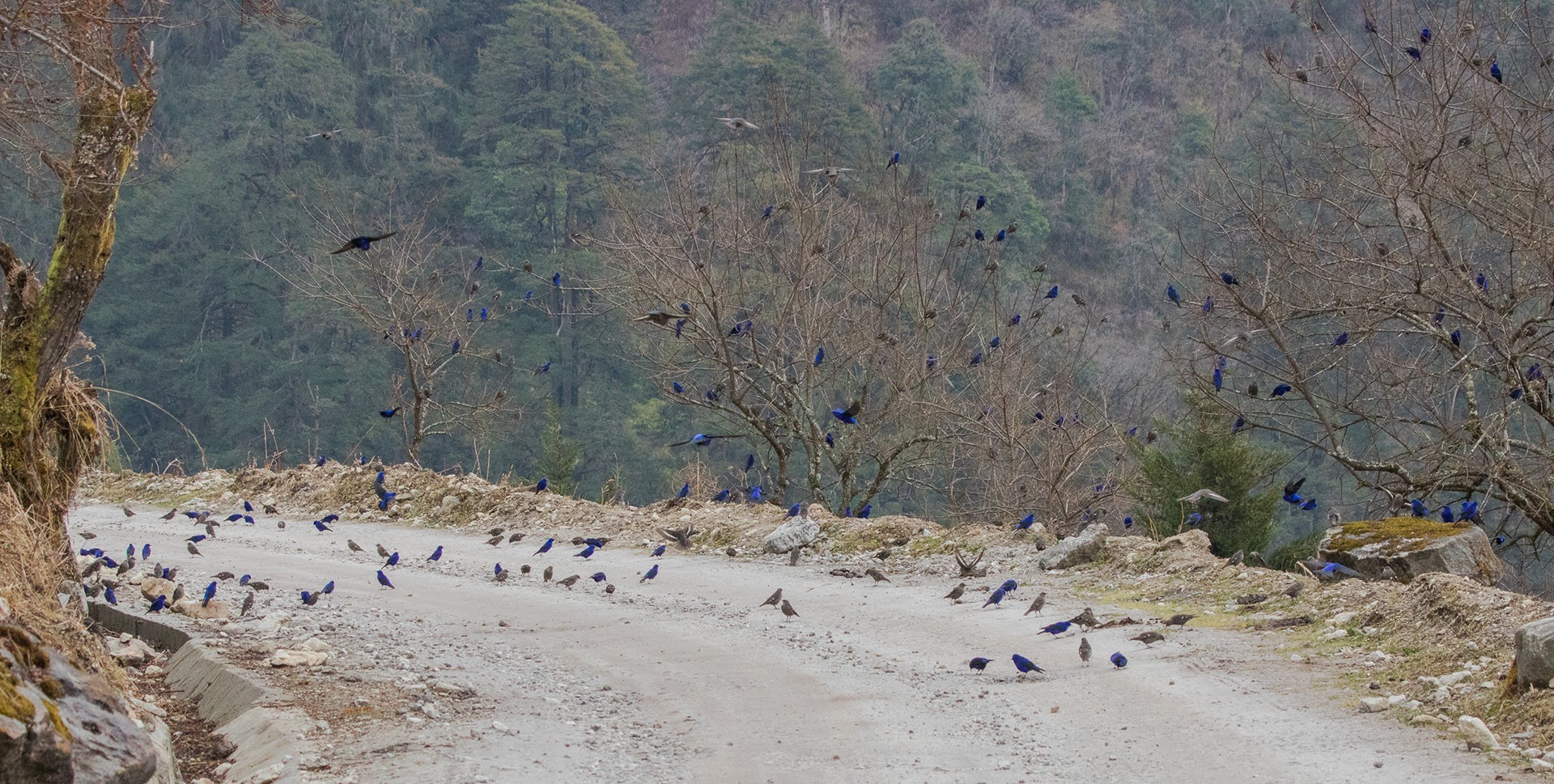I usually birdwatch without any specific targets in mind, but I’ll admit, the Grandala (Grandala coelicolor) was on my ‘subconscious wishlist’ on a family holiday in north Sikkim early this year.
The Grandala is an exceedingly stunning member of the thrush family. It ranges all across the Himalayas, through northeast of India and extending into China, and exists mostly in the mid-to-high altitudes. Even one is a joy to look at. But watching a flock of them is a surreal experience.
While in Sikkim, I was lucky enough to run into three separate flocks in quick succession, at an elevation of about 3,200m. By my estimate, there were about 650 Grandalas in all, all below the snowline and treeline. The first flock numbered around 150. Most of the birds were perched on bare trees and shrubs. The brilliant-hued males on those branches made it appear as if the plants had suddenly borne a profusion of bright, purplish-blue fruit. The second flock of about 400 birds was even denser. Literally every surface that could be perched on was covered: rocks, bare trees and shrubs, cables and the road itself, all suddenly dotted with blue.
The sight of a Grandala flock in the air is most accurately and vividly described by Salim Ali. Here’s his recollection of one of his sightings: “This swarm kept circling high over the valley… The cloud appeared as though wafted here and there by the wind. From time to time the birds would drop steeply like rain more or less in unison to settle on tall leafless trees, covering the top branches in dense clusters. Every little while, for no apparent reason, the swarm would suddenly take wing, circle aloft and tumble again into another tree…”
There couldn’t be a more apt description of my own sighting. Most of the birds I spotted were very confiding, and didn’t react to approach (except for the ones on the road, which took flight whenever a vehicle drove by). But, just as Salim Ali wrote, there were bursts of erratic behaviour too. From time to time, flocks would take flight, without any apparent stimulus. They would circle for less than a minute and then settle down again in the same area.
That wish I’d been harbouring had been fulfilled. And how.



